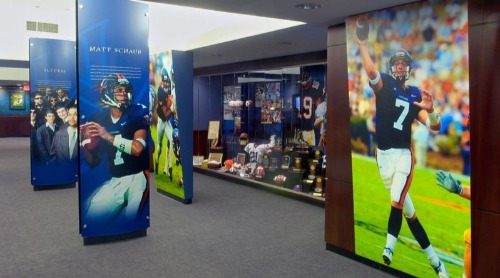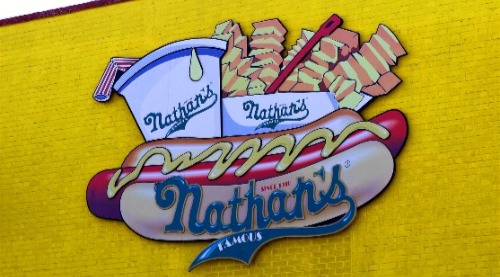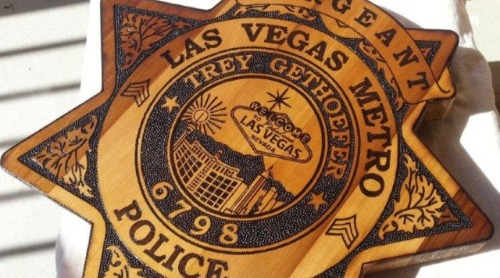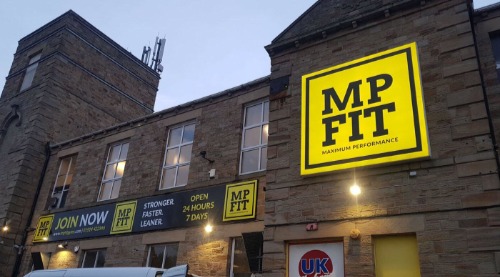Getting to Know Substrates
 Should you be using foam or wood in your outdoor signs? Will aluminum hold the paint you want to use? What if you live in a humid area and have mold issues? Answering these questions and more is easy after simply getting to know what each type of substrate can do. You can’t make a sign with just anything and expect it to last. While there are many types, we will look into four major types of substrates: Foam, Metal, Wood, and Plastic.
Should you be using foam or wood in your outdoor signs? Will aluminum hold the paint you want to use? What if you live in a humid area and have mold issues? Answering these questions and more is easy after simply getting to know what each type of substrate can do. You can’t make a sign with just anything and expect it to last. While there are many types, we will look into four major types of substrates: Foam, Metal, Wood, and Plastic.Foam Substrate
Most foam board is rather gentle and can’t withstand harsh conditions. Things like smashed corners and easily bendable make it more ideal for framing, pop up displays, exhibits and kiosks, and indoor use. There are some foam boards made with more grit. Some foam board comes with layers of wood fiber to make it more ridged and resistant to dents and scratches, but still recommended for indoor use. Most foam board accepts digital printing, screen printing, mounting, routing, knife/saw cutting, die punching cutting or paint. Within the various types of foam board includes those that are moisture resistant and can be smooth instead of rough texture.
There a few subtypes of foam substrate such as High-Density Urethane Board (HDU) that are ideal for outdoor signage. HDU is meant for dimensional signs and displays or hand carved. This type of foam board will accept virtually any paint after proper priming. Additionally, it’s fine grain-free surface that minimizes sanding, and reduces time on priming, painting, and finishing. This type of foam signage won’t absorb moisture and can last a long time as it isn’t prone to cracking, rotting or peeling.
Overall depending on the foam substrate use will depend on if it could be used for indoor or outdoor. They are water resistant and are not prone to mold. You have a lot of paint or printing options to work with and could be a viable solution to your sign needs.
 Metal Substrate
Metal SubstrateThere are many metal substrates, but most commonly used for signs is aluminum. There are three primary types of aluminum to look at: Alumalite, aluminum and steel composites, and plain aluminum. They are all great and recommended for outside use. They are strong and lightweight making them nice material. They can also come in various colors. Aluminum substrate for example can be purchase in green, blue, light gray, even gold and many more! You can purchase blanks or sheets with ease.
Alumalite has colors like blue and red and has a high gloss baked enamel finish. It is double sided and has an average durability of about ten years. It is known not to swell, corrode, rot, or delaminate so it can be a solid asset to a sign you’re looking to keep for a long time. It can be used for wall/fence-mounted signs, billboards/multiple panel signs, post & panel signs, backlit signs, cut-outs, channel letters, scoreboards, POP displays, and Kiosks. It also accepts screen printing, digital flatbed printing, and vinyl lettering. The diversity of options for this substrate is something to consider when making a sign!
Aluminum and Steel Composites come in various finishes between glossy, matt, and flat. It’s easy to cut and route making it easy to use. It accepts vinyl, digitally printed vinyl, and most paints for customization. It’s a lightweight and rigid substrate. The surface is incredibly flat and smooth to the touch. It can come in various colors and finishes to fulfill your creative needs. While its durable for outside use, indoor use is not unheard of. It is another substrate that has creative freedom for its user.
Metal substrates are normally used for outdoor use, as they are strong and durable, but indoor use is also common. With a multitude of colors and the ability to shape and print on the substrate as you’d like, this ridged material could be what you need to give your sign that extra wow factor.
 Wood Substrate
Wood SubstrateGiving your sign a handmade and enriched feeling is just what wood substrate does. If you’re looking for the wood substrate it can give your sign that home, down to earth feel not found with other substrates. You can find this material either plain or primed and either straight wood blanks or more complex wood composites. Wood substrate is great for both indoor and outdoor use, but depending upon the wood it needs extra care and upkeep. With wood substrate you need extra finishes and protective coating so it doesn’t warp and deteriorate over the years. It is also recommended the edges be capped or sealed. Some wood substrates come treated to deter against moisture, rot and termites. Most wood blanks have good weatherability and low stressed for minimal cracking and warping, making the need to maintain your sign less often. This substrate can be sandblasted, routed, laser engraved, painted, and carved.
The aesthetic of wood substrate is unmatched, but it needs extra care and a few extra steps to make it last and stay looking good. It is an indoor and outdoor substrate, and indoors it would be considerably less maintenance. It is still a great option for a sign and again, gives a feel that can’t be found elsewhere.

Plastic Substrate
Plastic substrates have a great deal of flexibility to adapt to your needs. There are several different kinds including Acrylic, corrugated plastic, polycarbonate, PVC, Styrene, and Flexface. Each has varying levels of durability, but are all strong substrates that can be used for both indoor and outdoor displays; except for Styrene that is recommended for only indoor.
Screen printing is the only option for Acrylic with recommended paints and inks. Acrylic also has great thickness, tolerance, uniformity and color consistency. Acrylic plastic has excellent weatherability and light transmission to go along with it. You can create easily with Acrylic because of its ability to be laser cut, saw-cut, drilled, cemented, thermoformed, and fabricated.
Corrugated Plastic substrate are high impact and excellent for indoor or outdoor. This substrate can be hand painted, screen printed, or takes vinyl lettering.
Polycarbonate substrate sheets are made to be UV-resistant and solar grade. With great aesthetics and high impact strength it could be an asset to your outdoor sign needs. Polycarbonate will accept vinyl lettering with the right steps and is sold by the foot off the reel.
PVC is another creatively flexible plastic substrate. It can be saw cut, rout, knife cut, die punch, or heat formed. It can accept approved paints, screen prints, direct digital prints, and vinyl films. It often comes in a smooth low-gloss finish and can be purchased in different colors as well.
Styrene is used for UV printing and thermoforming and as previously stated, only recommended for indoor use. It’s a high impact substrate most commonly found with a matt finish
Flexface allows for UV printing, vinyl, solvent, eco-solvent, and latex inks as well. Flexface is also a plastic substrate with anti-fungus and anti-wicking, but is typically used for backlit signs, awnings, and banners. It is tear and curl resistant and radio frequency weldable. This substrate, like its name suggests, is flexible.
Overall, the durability of plastic substrate depends upon the type, and depending upon desired design, the printing and painting can be limited. If one plastic substrate can’t fulfill your creative sign design needs, then another might do the trick, but be careful on recommended indoor and outdoor use.
Knowing facts like which substrates are naturally water resistant, and which need extra coating can make your substrate choices not only easier, but smarter. When you build your sign or set up your next display, you know what to do! The knowledge of what can and can’t be printed on what substrates and their uses can mean the difference between fulfilling your creative ideas and settling for less


